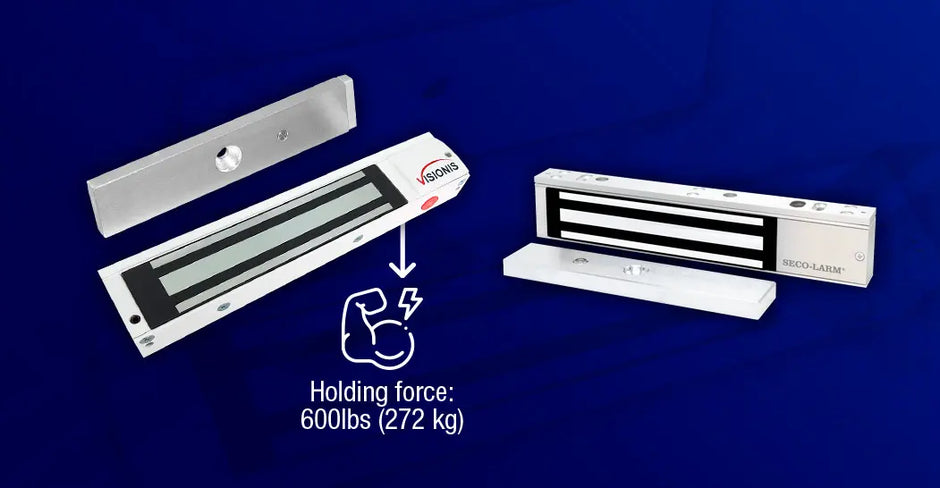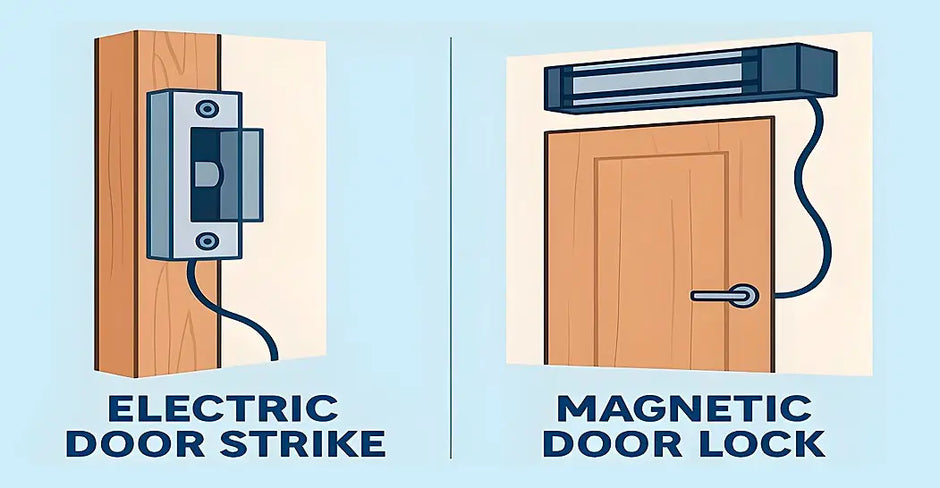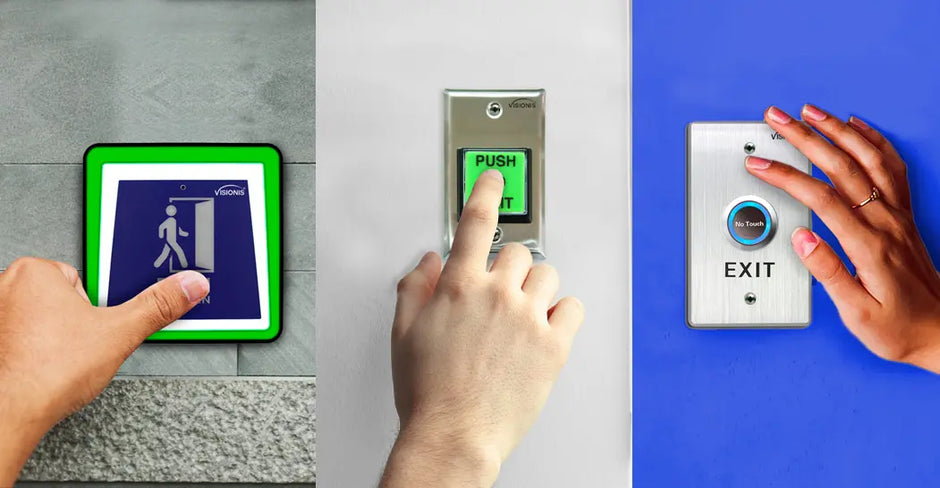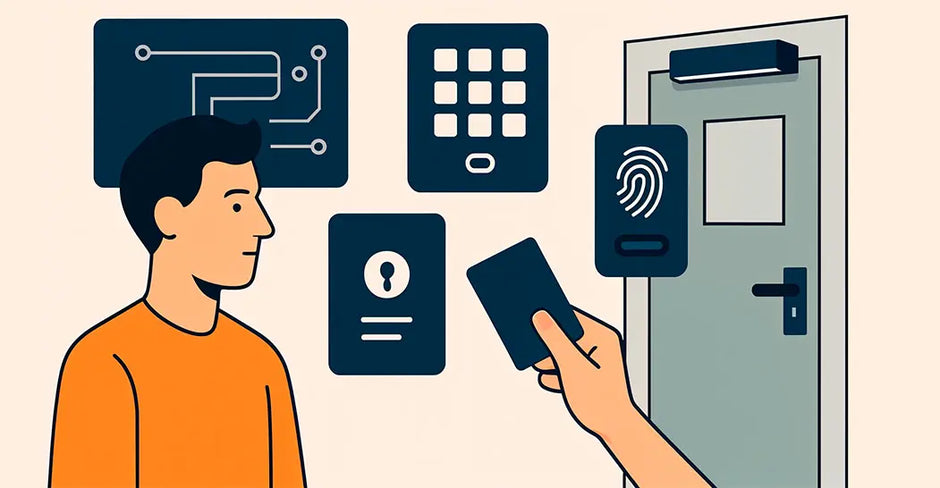Many store owners buy into a basic crime theory: Opportunity makes the thief. The design or a business operation and the management of it can set the perfect scenario for crime or create ideal ways to prevent it.
This guide helps store owners and managers focus on safety considerations like the door access control system in order to take some common-sense precautions. Even if your store is in a high-risk location, you can take preventive action to prevent or limit theft. Over time, repeated break-ins can destroy a company reputation and lead to a loss of property and profits.
1. DOOR ACCESS CONTROL SYSTEM: YOUR NEIGHBORHOOD YOUR BUILDING
As an owner or manager, how well do you know your own building or neighborhood? Focusing only on the financial performance or daily operations without knowing the lay of your land is like sticking your head in the sand. No matter how many door security devices or surveillance software you may use to help curb crime, you must stay abreast of the risks that are beyond your control.
You can start by paying attention to the outside of your building. Vary the times that you observe, as day activity will be different from the night. You should make sure that there is ample lighting outside to make it easy to see any wrongdoing and to keep your staff safe when they are using the door access control system to lock up or close the shop.
Lighting is also a key safety feature for parking. Even if you have surveillance software in place to record what happens on and around the premises, you will need to take other safety precautions. For example, keep garbage cans and dumpsters away from doors. They are trip hazards, distractions and offer blind spots for criminals when your staff is programming door security
2. DOOR ACCESS CONTROL SYSTEM: WATCH YOUR WINDOWS
Windows are part of the customer attraction for retail stores. If you have executed attractive merchandising plans and have irresistible window displays, customers will come to browse based on these choices. If a customer can get a glimpse of what is inside of a business, they are more likely to come inside.
The visibility you can create with windows creates a risk in retail, though. If you dress your windows with lots of colorful displays, you may obstruct the view into your store for law enforcement officers outside of your normal business hours. Add this risk to the lack of surveillance software and you have created a ripe opportunity for a thief. While it is tempting to lean more towards the marketing side of display windows based on the amount of traffic they can bring, it is best to use some caution. A window that a shopper can peek into is also a window for a thief. You must find some middle ground.
3. DOOR ACCESS CONTROL SYSTEM: THE FRONT DOORS
Often, criminals walk right in through the front door. They can be shoppers, monitoring professionals or employees. If you have installed magnetic door locks commercial businesses often use, there are pros and cons for protecting yourself against crimes of opportunity.
Although you can open the lock if there is an emergency, you are vulnerable in some other ways. Because these locks use electrical signaling, a thief only would need to shut off the electricity to gain access to your shop and merchandise. The gap between the frame and the door also lends itself to being pried open.
What makes this a great choice, however, is that the door can stay closed with as much as 1,200 pounds of force. Also, if you increase the current, you can increase the force of the magnet and keep undesirable thieves out.
You may find this door access control system ideal because the lock can open with several different signaling methods, including card swiping, key coding, motion sensors, and biometrics. The front door is a common point of entry for thieves, who sometimes try to sidestep the door security devices by breaking the glass on the door or using a pry bar.
Most thieves do not pick open locks as they are portrayed to do in movies. Instead, they choose to spin the lock cylinder out. A hard metal door access control system like one with magnetic door locks commercial shops use makes this a tougher goal. The thieves will have bigger hurdles to clear.

4. DOOR ACCESS CONTROL SYSTEM: THE BACK DOORS
Back-doors are a well-known target for criminals. They are secluded, do not have the same level of door security devices, are sometimes not covered by your surveillance software and are poorly lit.
Additionally, back-doors typically are not made of the same quality materials as a front door and have exposed handles and hinges. It is easy for criminals to pry them off and gain access to your shop. They simply use a pry bar to bend the bottom door corner opposite the hinged side of the door. This breach is undetected since shop owners typically place alarm sensors on the top of the door, mounted like magnetic door locks commercial shops install.
One reason that back doorways are more prone to break-ins is mostly due to where they are located. The rear and back alleys of buildings often are not monitored by a security team or supervised. This makes the back-door area a prime target for outside criminals. It also gives employees more tempted to engage in crimes of opportunity by stealing goods.
5. DOOR ACCESS CONTROL SYSTEM: THE ROOF
If you only are ensuring that your front doors, windows, neighborhood, and building have all been protected by surveillance software and a door access control system, you are missing another critical point of entry for burglars: the roof. Typically, thieves who choose to rob you this way bypass the risks from door security devices and magnetic door lock commercial shops put in place. Instead, they choose to enter your shop through the HVAC unit on the ceiling of your building or find a way to cut through the roof with a saw.
If they have staked you out long enough and time is not an issue for them, they can unbolt the HVAC unit and remove it with little effort. Therefore, it is important for you to be observant enough to notice even the smallest changes. It is also easier to cut a hole through the roof and the ceiling of a shop than find ways to break in through a door. This is a more common point of entry in remote locations where there are few residents.
Roof doors typically are not as strong as front or back-doors. In many cases, the shop or building owner does not even make sure the roof door is locked. Thieves have been able to come into a store, grab expensive merchandise and exit through that roof door. This is particularly easy to do in public places like clinics and hospitals where there is a lot of traffic and fewer dedicated monitoring personnel.
6. DOOR ACCESS CONTROL SYSTEM: OFFICE. RECEPTION AND STOCKROOMS
If you are in a retail shop, it stands to reason that you must let your employees and managers know many of the intimate details about how your operation works. They know all the codes for any magnetic door locks commercial buildings have, and they have control of the door access control system. They also know the combinations to your safe and where you have all the surveillance software and cameras. The risk you take by divulging all this information is that you do not know who among your staff is a thief.
If a thief is an outsider looking to commit a crime of opportunity, chances are they have had a chance to case your shop at some point or they have received good information from a staff insider who tells them where you keep the good stuff. They know which doors they can kick in, where they can break through the walls without detection or whether they will need to come through the ceiling to pull off a successful heist.
If your business maintains a separate room for unshelved stock, you should consider giving that room the same level of security as you would the front door. The same door security devices will protect your property. Some of your options include video surveillance, key control, ample lighting and creating a secured entrance. These forms of protection become especially important if your stock room is in the rear of your shop and there is relaxed access through the shipping doors. You should be prepared to limit who has access to this area and find a way to track the time and purpose for entry. This will enable you to narrow down the list when you are trying to find a culprit.
7. DOOR ACCESS CONTROL SYSTEM: IMPORTANT STORE CONTACT NUMBERS
In any shop scenario, it is important to keep the numbers of important contacts easily accessible and in several places. The direct number for police in addition to 9-1-1 access for dispatch will enable you to call police with pertinent details if there is no emergency in progress. You should call the universal dispatch number for emergencies and the local police number for everything else. Firefighters are considered first responders and sometimes arrive on the scene of an emergency before police or emergency medical technicians. In many cities, specific fire trucks are assigned to respond to specific local geographical regions.
You will also need the name of the alarm/monitoring company you have contracted to protect your shop. If they receive an alert, they will call you, but there may be instances in which you need to contact them for protocols or to change access codes to ensure security. Your CCTV provider also should be on your list of important contacts. If there is a burglary, they can offer footage of your shop at the time of an incident to help law enforcement officers catch the criminals.
A 24-hour locksmith and 24-hour emergency glass repair are good to help you restore order to your shop when there has been a break-in. Your first order of business after making sure you have contacted local law enforcement authorities and filed the right documents with your insurance company, another number you should have handy, is to help your staff feel safe. The best way to do that is to repair your shop and resume business as usual.
Finally, you may need to have the number of your security guard service at easy reach. If an incident prompts you to choose one, select a contractor with caution. Make sure you check out both the reputation of the company and the training of the company’s employees. You will need to trust this relationship even more than you trust your staff. The security company will be privy to information that you do not necessarily divulge to your employees.
When it comes to finding the right door access control system for your shop, you must consider several factors. First, you need to decide whether the conventional door security devices are appropriate for your building or if you can opt for magnetic door locks commercial shops typically choose. It is not very logical to choose a high-tech lock system if your door is flimsy and will give criminals another way to break in.

You must also determine how extensive you want your surveillance software to be. If you choose something that only monitors front and back doors, you leave yourself vulnerable to the thieves who may be on your payroll. If you have interior cameras everywhere except at the cash register or safe, you may never be certain how well your staff is managing your revenue.
Finally, embrace the idea that the best security system you can have started with choosing the right people. Hiring a staff with good integrity is half of your battle. Sometimes, the thief that you are waiting for is on your payroll.







